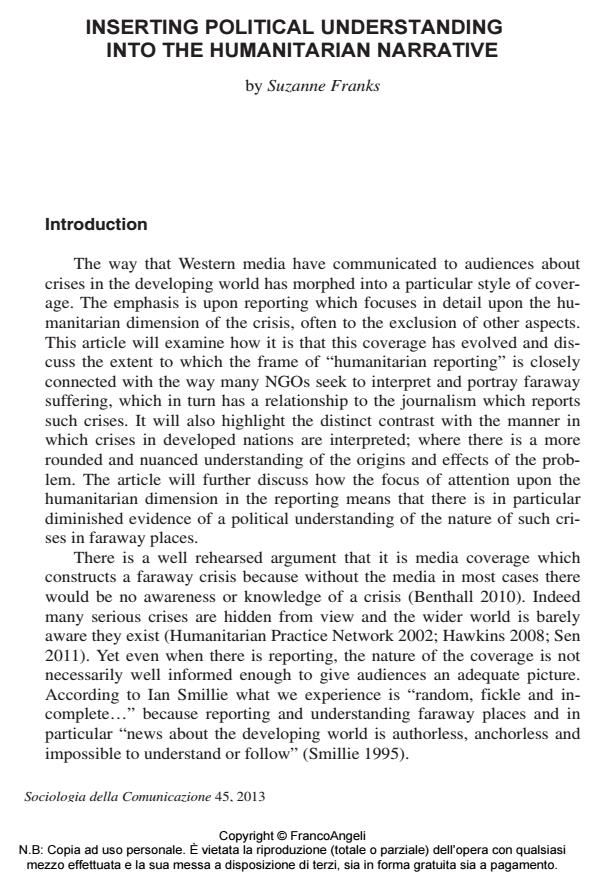Inserting political understanding into the humanitarian narrative
Titolo Rivista SOCIOLOGIA DELLA COMUNICAZIONE
Autori/Curatori Suzanne Franks
Anno di pubblicazione 2014 Fascicolo 2013/45
Lingua Italiano Numero pagine 15 P. 22-36 Dimensione file 136 KB
DOI 10.3280/SC2013-045003
Il DOI è il codice a barre della proprietà intellettuale: per saperne di più
clicca qui
Qui sotto puoi vedere in anteprima la prima pagina di questo articolo.
Se questo articolo ti interessa, lo puoi acquistare (e scaricare in formato pdf) seguendo le facili indicazioni per acquistare il download credit. Acquista Download Credits per scaricare questo Articolo in formato PDF

FrancoAngeli è membro della Publishers International Linking Association, Inc (PILA)associazione indipendente e non profit per facilitare (attraverso i servizi tecnologici implementati da CrossRef.org) l’accesso degli studiosi ai contenuti digitali nelle pubblicazioni professionali e scientifiche
Western media reporting of disasters in faraway countries (especially in Africa) frequently follows a template which fails to take account of political circumstances. Very often journalism relies upon familiar stereotypes - using frames such as "primitive tribal hatreds" or resorting to explanations based upon "natural disaster", when there are in fact complex underlying social and political causes to many crises and complex emergencies. This paper will analyse the way that so called "humanitarian reporting" has failed to take account of political explanations with reference to key case studies and explain why this is a matter of vital concern. It will highlight the powerful and consciously apolitical position of international aid agencies and examine the many layered and interrelated factors which contribute to the absence of political analysis in the way that distant crises are described and understood.
Parole chiave:Umanitario, politica, catastrofe, report, crisi, narrazioni.
Suzanne Franks, Inserting political understanding into the humanitarian narrative in "SOCIOLOGIA DELLA COMUNICAZIONE " 45/2013, pp 22-36, DOI: 10.3280/SC2013-045003